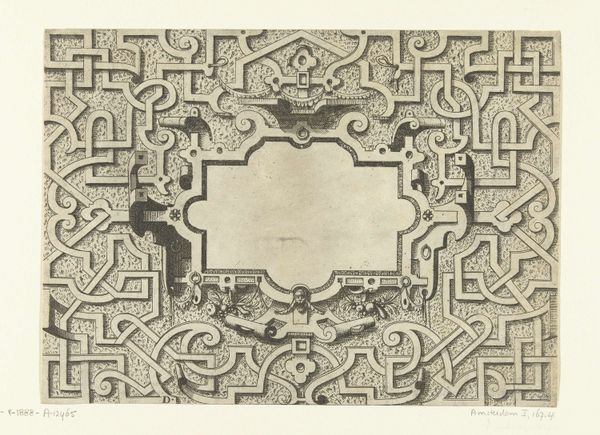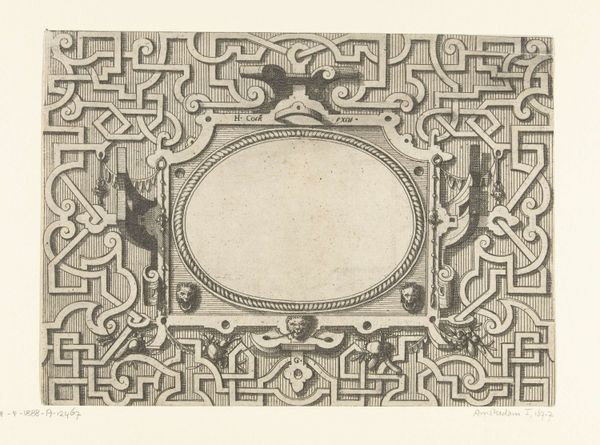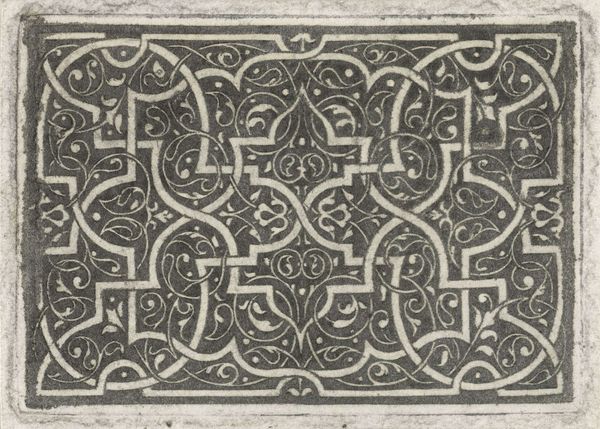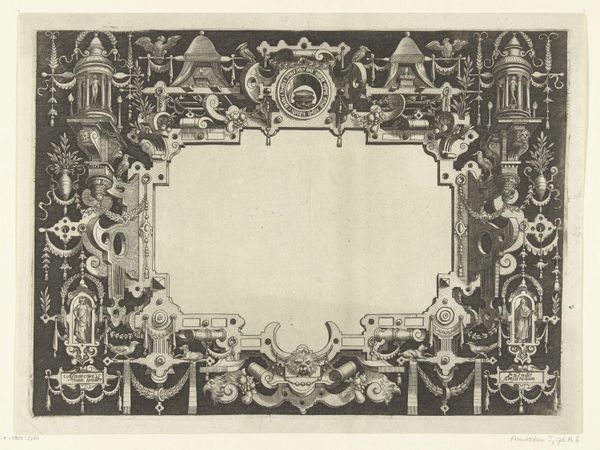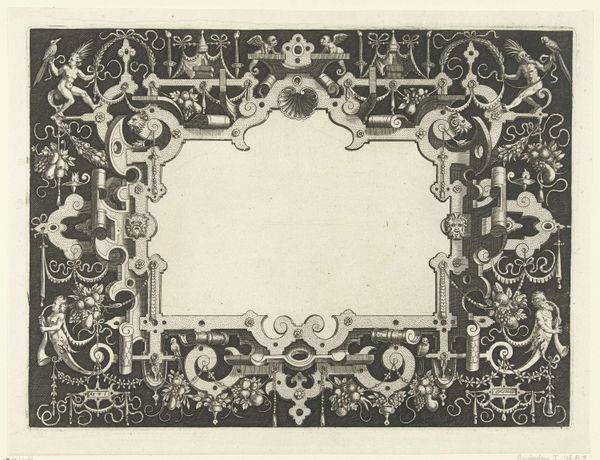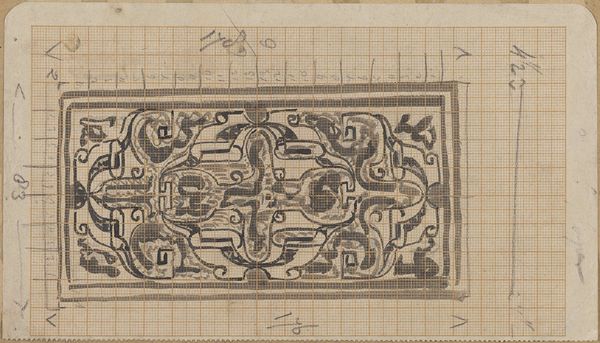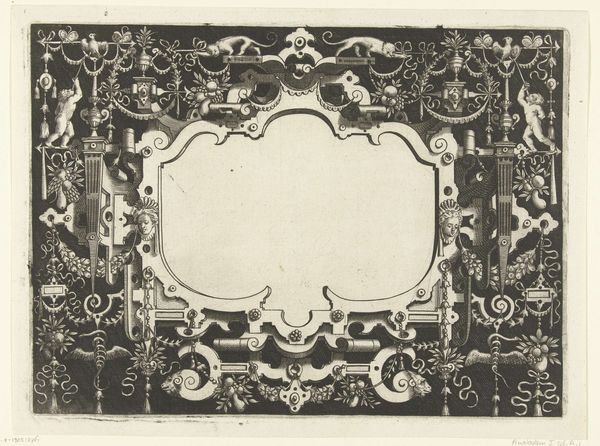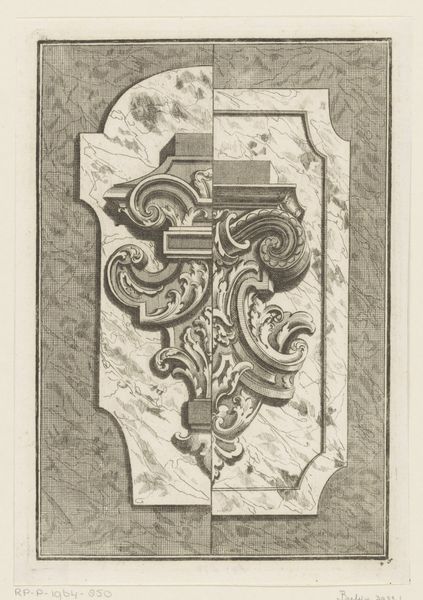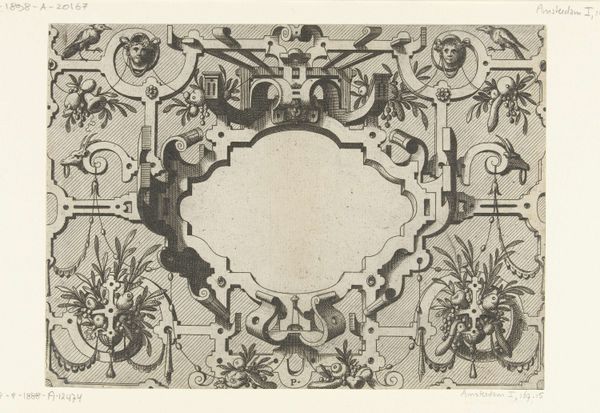
Rechthoekige cartouche omgeven door moresken c. 1555 - 1560
0:00
0:00
print, engraving
#
type repetition
#
natural stone pattern
#
rippled sketch texture
# print
#
detailed texture
#
pattern
#
woodcut effect
#
11_renaissance
#
carved into stone
#
geometric
#
embossed
#
pattern repetition
#
northern-renaissance
#
decorative-art
#
layered pattern
#
funky pattern
#
engraving
Dimensions: height 158 mm, width 212 mm
Copyright: Rijks Museum: Open Domain
This is a rectangular cartouche surrounded by moresques, made by Johannes or Lucas van Doetechum, using an engraving technique. The image presents a central, empty rectangle, bordered by intricate, interlacing patterns known as moresques. These designs, reminiscent of Islamic art, were fashionable in Europe, particularly during the 16th and 17th centuries. Made in the Netherlands, this print reflects the era's fascination with ornamentation and the exotic. The moresque motifs, combined with the cartouche, suggest the influence of both the Renaissance and the ongoing cultural exchange between Europe and the Islamic world. Historical documents from the Rijksmuseum might further illuminate its purpose, whether as a template for artisans, a collector's piece, or an educational tool. The presence of such an artwork prompts questions about the era's tastes, the role of printmaking in disseminating design, and the cultural dynamics at play. Art history isn't just about aesthetics; it's about understanding the social and institutional contexts that shaped artistic production.
Comments
No comments
Be the first to comment and join the conversation on the ultimate creative platform.
